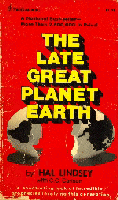
 The World Sinks Except Japan (2007), and others
The World Sinks Except Japan (2007), and othersOne great thing (out of the many) of visiting Korea, a country brutally occupied and made into a colony of Japan in 1910, is the almost-contempt for the Japanese’s still harping on the atom bombs: “Oh get over it,” the Koreans essentially seem to be saying.
Be that as it may, for some reason, the Japanese really do massive destruction well, and routinely to themselves, I might add. Hmmm…is this also a question of psychology? Some weird massive passive-aggressiveness?

That could be one of the subtexts of the satire The World Sinks Except Japan.
Released to DVD in November 2008 by Synapse Films, this is a spoof of the 2006 Toho hit Nihon Chinbotsu. I’ve seen this translated as “The Submerging of Japan,” “Japan Sinks” and, according to Netflix, it will be released on DVD in the States as “Doomsday: The Sinking of Japan,” but they had no further details, like a release date.

The new Japan Sinks (I stick with this because it's a cool title, and a dumb reviewer can always criticize it by calling it “Japan Stinks;” nyuk-nyuk, snuuurk!) was in the theaters in Tokyo when we were there in 2006, and yowzers, the TV ads looked great: Total mega-destruction!

But that was Japan Sinks’ trailer, and we all know that trailers do nothing if they don't LIE! However, the flick’s gotten some flack for its syrupy nationalism. There’s a fairly critical review of Japan Sinks here.
(We didn’t go see Japan Sinks when we were in Tokyo, figuring it would be on DVD soon enough, and that our time would be better spent wandering aimlessly through Tokyo’s streets of confusion.)


Along with being a smarter-than-average doomsday movie, the Minoru Kawasaki-directed The World Sinks Except Japan (Nihon Igai Zenbu Chinbotsu, 2006) is a good Kurt Vonnegut-wannabe satire poking very politically incorrect fun at resurgent Japanese nationalism. Familiarity with some aspects of Japanese culture is needed, and the film really should have been cut down to 45 minutes to one hour long—because much of it feels like a filmed stage play, and that gets old fast: especially considering some of the “opened up” scenes are sharp and to the point, like the making of an Ultra-Man-esque show (where only foreigners are squashed; Japan is overrun with refugees, making Japanese even more insular) and an amusing montage of a couple “returning” to traditional values.

The World Sinks Except Japan would’ve been much better if only they’d spent more bucks (or yen) on more scenes of continental destruction—or at least bought some stock footage from an old Japanese mega-disaster flick like The Last War (1961) [Good article here], Gorath (1964), The Last Days of Planet Earth (1974),

or the original Japan Sinks (1973). Roger Corman’s New World Pictures released this Toho film in the US as an extremely shortened 73-minute (or 82-minute, depending on where you look) version called Tidal Wave (which will probably be never released to DVD, but there are some groovy scenes of Toho-style destruction here).
I remember being taken by some sort of parental figure to see Tidal Wave at some rundown Manhattan theater way back when. I remember there were cool scenes of destruction, but often followed by lots of boring stuff. Then Lorne Greene would show up doing the Raymond Burr/Godzilla/Gojira gaijin exposition routine—this time Greene is at the UN, trying to…I don’t remember…something about Japan sinking. I do remember that the movie was surprisingly grim, with a very unhappy ending: lovers separated by continents, each thinking the other is dead, and of course, the total submersion of the Home Islands. 


Not that Kawasaki could have ever gotten footage from any of those films: they’re all Toho productions, and it’s doubtful the company (which is infamously litigious about its property, especially Gojira/Godzilla) would sell footage to a movie satirizing its latest blockbuster. 
But Kawasaki could’ve swiped public domain stock footage. Isn’t that what Hal Lindsay’s infamous The Late Great Planet Earth (1976) did? I obsessed over this flick when I was a kid. I can barely remember the movie now, but must have seen this in the theater three times when I was 11.
It can be ordered at—dig that name: Armageddon Books! Yow! Hmmm…The DVD is only about $22. Should I buy it? Should I…? Hmmmmm…. Director Minoru Kawasaki’s been making a name for himself, and I absolutely want to see what he does with his remake of The X From Outer Space.
Director Minoru Kawasaki’s been making a name for himself, and I absolutely want to see what he does with his remake of The X From Outer Space. If that man in a monster suit smashing into those high-tension wires looks familiar, it’s not just because he’s the monster from the remake of The X From Outer Space, but also because you’ve been seeing him in some commercials. There’s an almost absurdly long article about the making of the commercial here, at the always good-to-visit SciFi Japan site.
If that man in a monster suit smashing into those high-tension wires looks familiar, it’s not just because he’s the monster from the remake of The X From Outer Space, but also because you’ve been seeing him in some commercials. There’s an almost absurdly long article about the making of the commercial here, at the always good-to-visit SciFi Japan site.
I’m hoping that after The Day After Tomorrow and the upcoming 2012, Roland Emmerich will lead the Germans into the cinema of mass destruction, but who knows? Thankfully us Yankees are picking up the slack—especially with that trio of B-movies with A-triple-plus budgets: Cloverfield, The Mist and Spielberg’s War of the Worlds.  The US only seemed to get back on the total destruction bandwagon after CGI was refined to a point, starting with Terminator 2’s nuked L.A. and Tim Burton’s Mars Attacks!
The US only seemed to get back on the total destruction bandwagon after CGI was refined to a point, starting with Terminator 2’s nuked L.A. and Tim Burton’s Mars Attacks!
—not to say that H’wood never stopped destroying the world, but only to varying degrees: a building here, a ship there; total destruction stuff like Earthquake was a rarity.
Personally, I think neither Armageddon nor Deep Impact blew up enough stuff. On the destruction scale, I found these flicks wanting. On the other hand, the aforementioned The Day After Tomorrow is pure disaster porn, and I am grateful to the Fox Movie Channel for repeating it often.













No comments:
Post a Comment